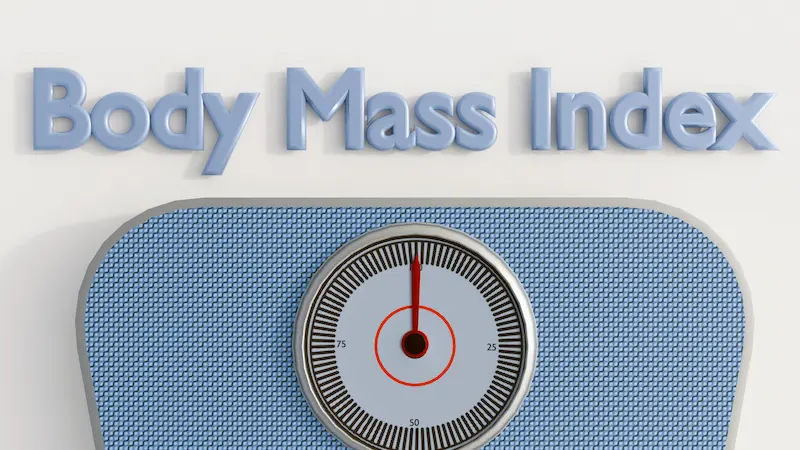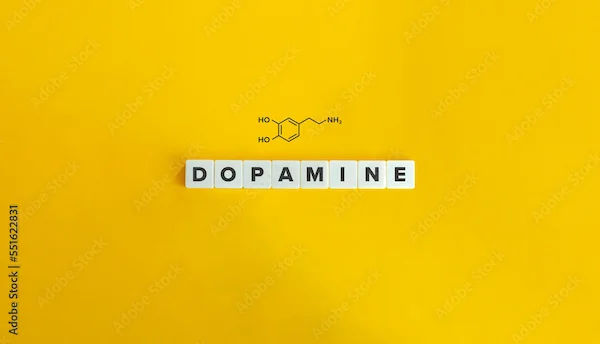Your Ultimate First Aid Kit Guide: Be Prepared for Any Emergency
Know about the first aid kit guide, why we need it, essentials, specialised stocks, how to maintain the first aid kit and more.

Written by Dr. J T Hema Pratima
Reviewed by Dr. Dhankecha Mayank Dineshbhai MBBS
Last updated on 5th Oct, 2025

Introduction
A sudden cut while cooking, a minor burn from the iron, or a child’s scraped knee these small emergencies happen every day. While often not life-threatening, they demand immediate and correct care to prevent infection and promote healing. This is where a well-stocked first aid kit becomes indispensable. It’s not just a box of bandages; it’s your first line of defense, a tool that empowers you to act confidently when accidents occur. This comprehensive guide goes beyond a simple checklist. We will explore the essential items every kit needs, delve into specialised supplies for different lifestyles (like travel or outdoor adventures), and provide practical advice on how to use each item effectively.
Why Every Home Needs a Well-Stocked First Aid Kit?
Many people assume a first aid kit is only for major disasters. In reality, its primary value lies in handling the frequent, minor injuries of daily life. Having supplies readily available allows you to respond instantly, which is crucial for cleaning wounds properly before bacteria can cause an infection. It saves you a frantic trip to the pharmacy and provides peace of mind, knowing you can care for your family effectively. Preparedness reduces stress and ensures a quicker, more efficient recovery.
Consult Top Specialists for Personalised Tips
The Statistics of Common Household Injuries
According to the National Safety Council, millions of people are treated for injuries in their own homes each year. Common incidents include falls, cuts from sharp objects, burns from hot surfaces or liquids, and poisoning from household chemicals. A significant number of these are manageable with prompt first aid. Having a kit isn't about expecting the worst; it's about being practically equipped for the common bumps and scrapes of life.
The Essential First Aid Kit Checklist: Core Components
Whether you buy a pre-assembled kit or build your own, these core items are non-negotiable. They form the foundation of effective wound care and initial injury management.
Wound Care and Cleaning Supplies
Before covering any wound, it must be clean.
Antiseptic Wipes or Solution: (e.g., alcohol-based wipes or povidone-iodine) for disinfecting the skin around a wound. Tip: Use these to clean your own hands before treating someone else.
Sterile Saline Solution: Ideal for gently flushing debris out of cuts or rinsing eyes.
Hydrogen Peroxide (3%): Can be used for initial cleaning but is best for disinfecting tools, not for repeated use on skin.
Bandages and Dressings for Different Wounds
The different types include:
Adhesive Bandages (Plasters): Various sizes for small cuts and blisters.
Sterile Gauze Pads: (4x4 inches is a versatile size) for covering larger wounds. They absorb blood and allow the wound to breathe.
Roller Gauze: To secure gauze pads in place.
Adhesive Tape: (Paper or cloth) for securing dressings without irritating the skin.
Elastic Bandage (e.g., Ace bandage): For wrapping sprains or strains to provide compression and support.
Triangular Bandage: Can be used as a sling for arm injuries or as a large dressing.
Tools and Equipment: The Unsung Heroes
The tools and equipment include:
Scissors: Sharp, blunt-tip scissors for cutting tape, clothing, or gauze.
Tweezers: Fine-point tweezers for removing splinters, debris, or ticks.
Disposable Gloves: Nitrile or latex-free gloves to protect both you and the injured person from contamination.
Digital Thermometer: A non-contact forehead thermometer is a hygienic choice.
Instant Cold Pack: Activate by squeezing for treating bumps, sprains, or burns.
Beyond the Basics: Specialised Additions for Your Kit
Once you have the core supplies, consider these additions to enhance your kit's capability.
Medications and Topical Treatments
The medications include
Pain Relievers: Aspirin, ibuprofen, or acetaminophen for pain and fever. Note: Aspirin should not be given to children or teenagers.
Antihistamines: For allergic reactions, insect bites, or hay fever.
Hydrocortisone Cream (1%): To relieve itching from rashes or insect bites.
Antibiotic Ointment: (e.g., Neosporin) to apply to minor cuts to prevent infection.
Aloe Vera Gel: For soothing sunburns and minor thermal burns.
Calamine Lotion: For poison ivy or chickenpox.
Emergency Contact Information and Medical History
A truly comprehensive kit includes information. Keep a card with:
Emergency phone numbers (poison control, family doctor).
Family members' known allergies and medical conditions.
A small first aid manual or instruction booklet.
Tailoring Your Kit: First Aid for Different Scenarios
A one-size-fits-all approach doesn't work. Customise your kits based on where they will be used.
The Car First Aid Kit: For Road Trips and Commutes
Your car emergency kit should handle vehicular accidents and roadside issues. Include all basics plus:
A reflective safety vest and road flares.
A multi-tool or seatbelt cutter/window hammer.
A space blanket for warmth.
Extra bottles of water.
The Travel First Aid Kit: Health on the Go
When travelling, especially internationally, your kit is vital. Add:
Motion sickness medication.
Anti-diarrheal medication.
Water purification tablets.
Any personal prescription medications (in original containers).
The Outdoor Adventure Kit: Hiking, Camping, and Sports
This kit must be lightweight but robust.
A SAM Splint (moldable splint for fractures).
An emergency whistle and signal mirror.
Moleskin for blister prevention and treatment.
A more comprehensive supply of antiseptics and larger trauma dressings.
How to Use Your First Aid Kit Effectively
Having a kit is one thing; knowing how to use it is another.
Step-by-Step: Treating a Minor Cut or Scrape
1. Wash Your Hands: Put on disposable gloves.
2. Stop the Bleeding: Apply gentle pressure with a sterile gauze pad.
3. Clean the Wound: Rinse with clean water or saline. Use an antiseptic wipe around the wound (not directly in it, as it can irritate).
4. Apply Ointment: A thin layer of antibiotic ointment.
5. Cover It: Apply a sterile bandage or adhesive strip.
6. Change Dressing: Daily or if it becomes wet or dirty.
When to Seek Professional Medical Help
Your first aid kit is for minor issues. Seek immediate medical attention for:
Bleeding that doesn't stop after 10 minutes of direct pressure.
A deep, large, or gaping wound.
Signs of infection (increased redness, swelling, pus, fever).
An animal or human bite.
A burn that is large, deep, or on the face, hands, feet, or genitals.
If you are unsure about the severity of an injury, it is always best to consult a doctor. You can book a quick online consultation with a doctor on Apollo24|7 to get immediate advice.
First Aid Kit Maintenance: Keeping Your Supplies Ready
A neglected kit is a useless kit. Implement a simple maintenance routine.
The 6-Month Check: Inspection and Rotation
Set a reminder to check your kits every six months.
Check Expiry Dates: Discard and replace any expired medications, ointments, and solutions.
Restock Used Items: If you've used bandages or wipes, replenish them immediately.
Ensure Integrity: Make sure seals on sterile items are not broken and packaging is intact.
Conclusion
A first aid kit is more than a collection of medical supplies; it is a fundamental component of a safe and responsible lifestyle. It represents a commitment to the well-being of yourself, your family, and those around you. By taking the time to assemble a comprehensive kit, maintain it properly, and learn the basics of its use, you move from being a passive bystander to an active, confident responder in an emergency. This preparedness brings invaluable peace of mind. Start today, audit your current supplies, fill the gaps, and place your kit in an easily accessible location. Your future self will thank you for taking this simple, yet profoundly important, step toward safety and health.
Consult Top speciality
Consult Top Specialists for Personalised Tips

Dr. Syed Ismail Ali
General Practitioner
7 Years • MBBS
Hyderabad
Apollo 24|7 Clinic, Hyderabad

Dr. Avinash Pasuparthy
General Practitioner
5 Years • MBBS
Visakhapatnam
Apollo Clinic Vizag, Visakhapatnam

Dr. Pankaj Tripathi
General Practitioner
20 Years • MBBS, MD Pathology
Lucknow
Best Diabetologist Clinic, Lucknow

Dr. Ritesh Motghare
General Practitioner
18 Years • MBBS PGCDM
Nagpur
HEALTH CENTRE VNIT NAGPUR, Nagpur

Dr Syed Mateen Pasha
General Physician
2 Years • MBBS
Bengaluru
PRESTIGE SHANTHINIKETAN - SOCIETY CLINIC, Bengaluru
Consult Top speciality

Dr. Syed Ismail Ali
General Practitioner
7 Years • MBBS
Hyderabad
Apollo 24|7 Clinic, Hyderabad

Dr. Avinash Pasuparthy
General Practitioner
5 Years • MBBS
Visakhapatnam
Apollo Clinic Vizag, Visakhapatnam

Dr. Pankaj Tripathi
General Practitioner
20 Years • MBBS, MD Pathology
Lucknow
Best Diabetologist Clinic, Lucknow

Dr. Ritesh Motghare
General Practitioner
18 Years • MBBS PGCDM
Nagpur
HEALTH CENTRE VNIT NAGPUR, Nagpur

Dr Syed Mateen Pasha
General Physician
2 Years • MBBS
Bengaluru
PRESTIGE SHANTHINIKETAN - SOCIETY CLINIC, Bengaluru
More articles from General Medical Consultation
Frequently Asked Questions
What is the single most important item in a first aid kit?
While all items are important, disposable gloves are critical. They protect both the caregiver and the injured person from bloodborne pathogens and infection, making them the first thing you should use in any situation involving blood or bodily fluids.
Where is the best place to store a home first aid kit?
Store it in a central, easy-to-access location that is known to all adults and older children, but out of reach of very young children. A high shelf in a kitchen cupboard, hallway closet, or laundry room is are ideal spot. Avoid humid places like bathrooms.
Can I use a first aid kit for my pet?
Many supplies are similar (gauze, bandages), but a pet-specific kit is recommended. Human medications can be toxic to animals. Include pet-specific items like a muzzle (an injured animal may bite) and contact information for your veterinarian.
How often should I replace the contents of my first aid kit?
There's no need to replace everything at once. Check expiration dates every six months. Medications and creams typically expire within 1-3 years. Sterile items like bandages and gauze have a long shelf life unless the packaging is damaged.
Is a pre-made kit from the store good enough?
Pre-made kits are an excellent starting point, especially for beginners. However, they are often generic. It's highly recommended to open the kit, familiarise yourself with the contents, and personalise it by adding medications specific to your family's needs and any specialised items for your activities.




